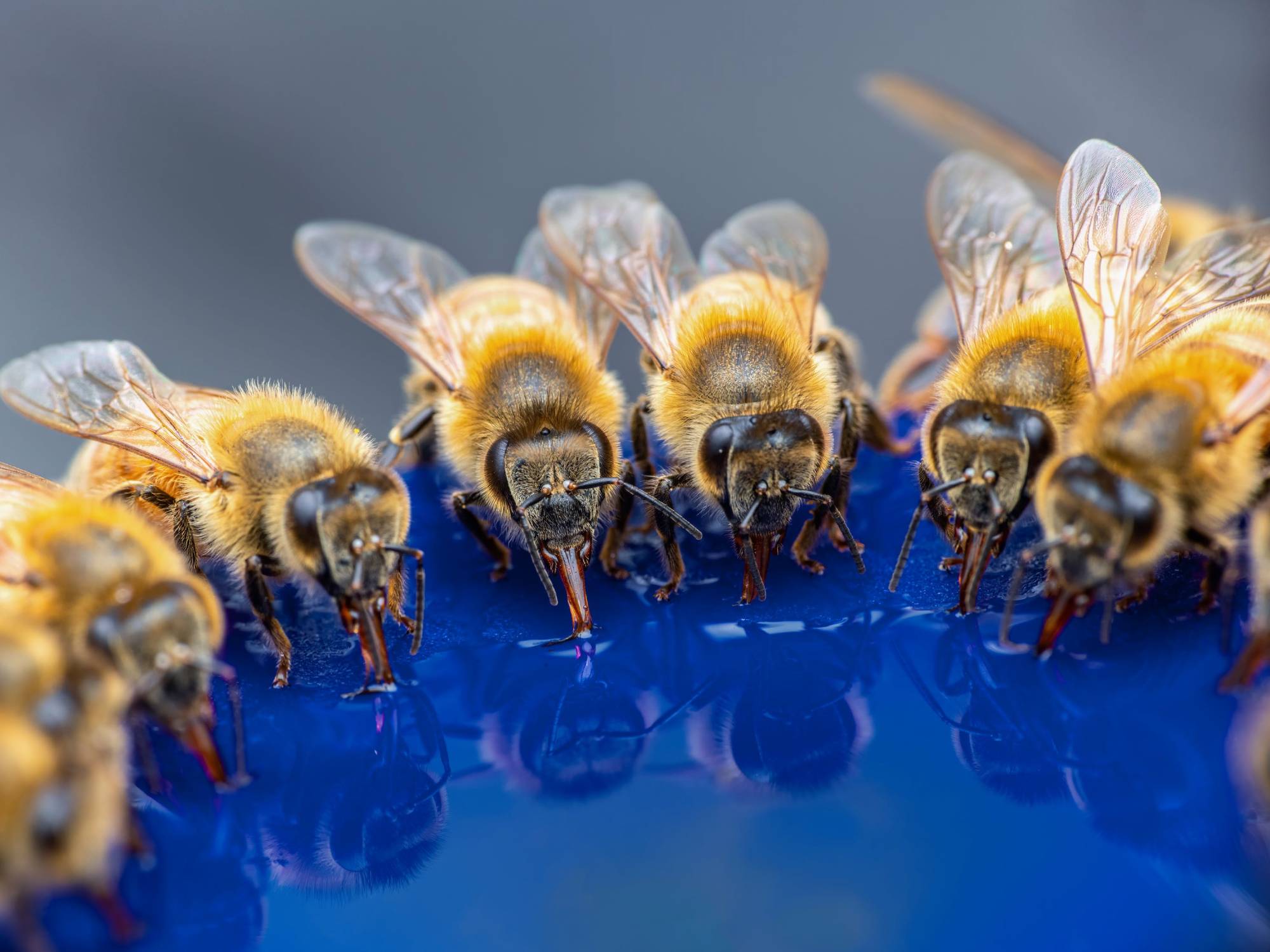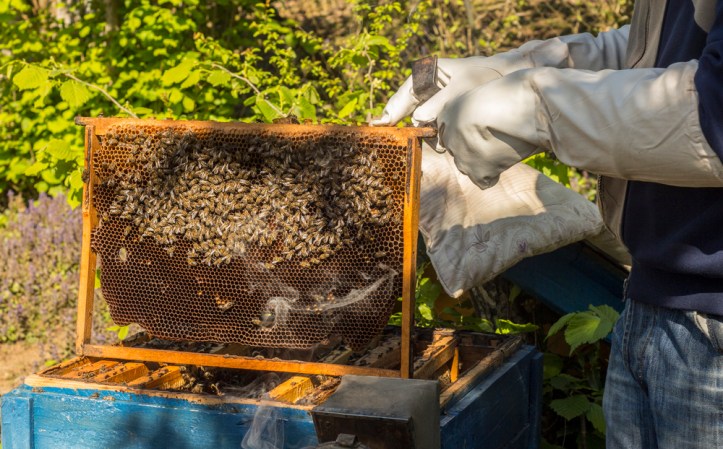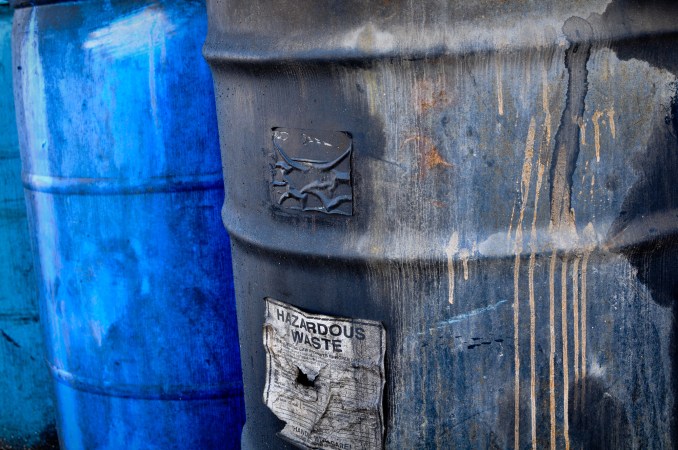

This story has been updated. It was originally published in June 8, 2021.
Bees are awesome, and they play an important role in making sure we have food on our tables. But you’ve probably heard these incredibly intelligent insects are in trouble. Pesticides are making these buzzers stupid or even killing them, and urban sprawl means bees have to travel farther from their hives to feed.
People have responded to this threat by jumping on the beekeeping bandwagon. The practice of caring and looking after thousands of bees has become popular in recent years, especially in cities, where bee-lovers install hives in their backyards, on their roofs, and even right in their living rooms.
[Related: Roads and highways disrupt bee pollination]
But as exciting as beekeeping may be, it is a hobby that requires the same commitment and responsibility as adopting a puppy. And not everyone is suited for it. Don’t be disappointed, though. There are plenty of other things you can do to help bees, and some of them don’t even require you to interact with insects or even leave your chair.
1. Install a feeder
Bigger cities often mean fewer and smaller patches of green. For people, it means less space to barbecue on the weekends. But for bees and other pollinators, it means they have to fly farther from their nests and hives to get the food they need. And as anyone who has driven down the highway on fumes will tell you, gas stations are crucial.
Feeders are exactly that. Buy one or make one yourself, fill it with fresh water, put it where pollinators can find it (shady trees are good spots) and you’re set. You can also set up a watering station. Put out a shallow plate with water and add some pebbles to provide a non-slippery surface the insects can stand on. (Bees can’t swim, so if they fall into the water, they will drown.)
Place your feeder or watering station away from high traffic areas and where pollinators can find it (shady trees are good spots). Check the water every day and replace it when it’s stagnant or dirty.
2. Plant a pollinator garden
If a feeder is a gas station for a bee, a pollinator garden is a full rest stop—with bathrooms, a diverse food court, and maybe even a cozy park nearby.
[Related: Humans need bumble bees—and they are disappearing faster than we thought]
Whether you have a backyard or only a windowsill, you can make pollinators’ lives easier by growing a variety of plants. Which ones you get, however, will depend on where you live. Luckily for you, we have a complete guide on how to start your own pollinator garden. Here, you’ll learn how to make the best out of your space and get a list of exactly what plants to pick up at your local nursery.
3. Volunteer
There are plenty of organizations out there that want you to help them save the bees. Search for “bee conservancy organizations near me” to find the option that suits you best. Most websites have specific pages where you can sign up as a volunteer, and if they don’t, you can always contact them directly and ask if there are volunteering opportunities available.
The good news is you can help the bees even if these black-and-yellow buggers make you nervous. For example, the nonprofit Puget Sound Beekeepers Association in Seattle has jobs that range from beekeeping assistants to content contributors and even honey salespeople.
As with every volunteer program, make sure you investigate all the information on the organization’s website and contact them to ask about requirements for the position you’re interested in, as well as any other questions. If you can, talk to other volunteers to get a better sense of what they’re doing and if the program fits your abilities and schedule.
4. Find a mentor
Becoming a beekeeper’s mentee is like babysitting your baby nephew once a week—you have fun, you work hard, and you get to go home free of responsibilities. But above all, you get to learn the ins and outs of beekeeping directly from someone experienced.
Mentorships are the way most beekeepers learn their trade. But unlike volunteer programs, most organizations don’t have a sign-up sheet or application you can write your name on. Instead, finding a mentor is a much more intuitive process and a lot has to do with the chemistry you have with your would-be mentor.
[Related: A sting-free guide to becoming a DIY beekeeper]
But before you hit your local beekeeping club in search of a beacon of wisdom, make sure you do your research. It’s unlikely someone will agree to be your mentor if they have to teach you everything from scratch, so your best bet is to hit the internet or your local library and do some reading. There are plenty of resources out there, and you can even find reading lists for beginner beekeepers that will get you started on all the basics.
You may also want to do some volunteer work before finding a mentor, as it can give you the experience you require to be a good beekeeper’s helper. The blog Beekeeping Like a Girl has some great advice on how to find a mentor, including vetting candidates and setting realistic expectations.
Remember that everyone was a noob at first, so don’t be afraid to reach out to people at your local beekeeping club and ask questions.
5. Donate to a bee conservation program
This is definitely the most boring of all your bee-saving options, but that doesn’t make it any less important.
Every conservancy organization needs resources, and if donating your work and time is not an option for you, sharing your bucks can certainly make a difference. Choosing a local non-governmental organization or program is the best way for your donation to make an impact in your community. Just search the internet for an initiative near you, or consult with your local beekeeping club and ask them how you can make a donation.
You can also find ways to help national or even international organizations, like the American Beekeeping Federation or Pollinator Partnerships. Most of these big initiatives have pages on their websites where you can make recurring or one-time donations without leaving your seat.
Correction June 14, 2021: This story stated feeders should be filled with a water and sugar solution. Plain water is better, as added sugar affects the quality of honey.































